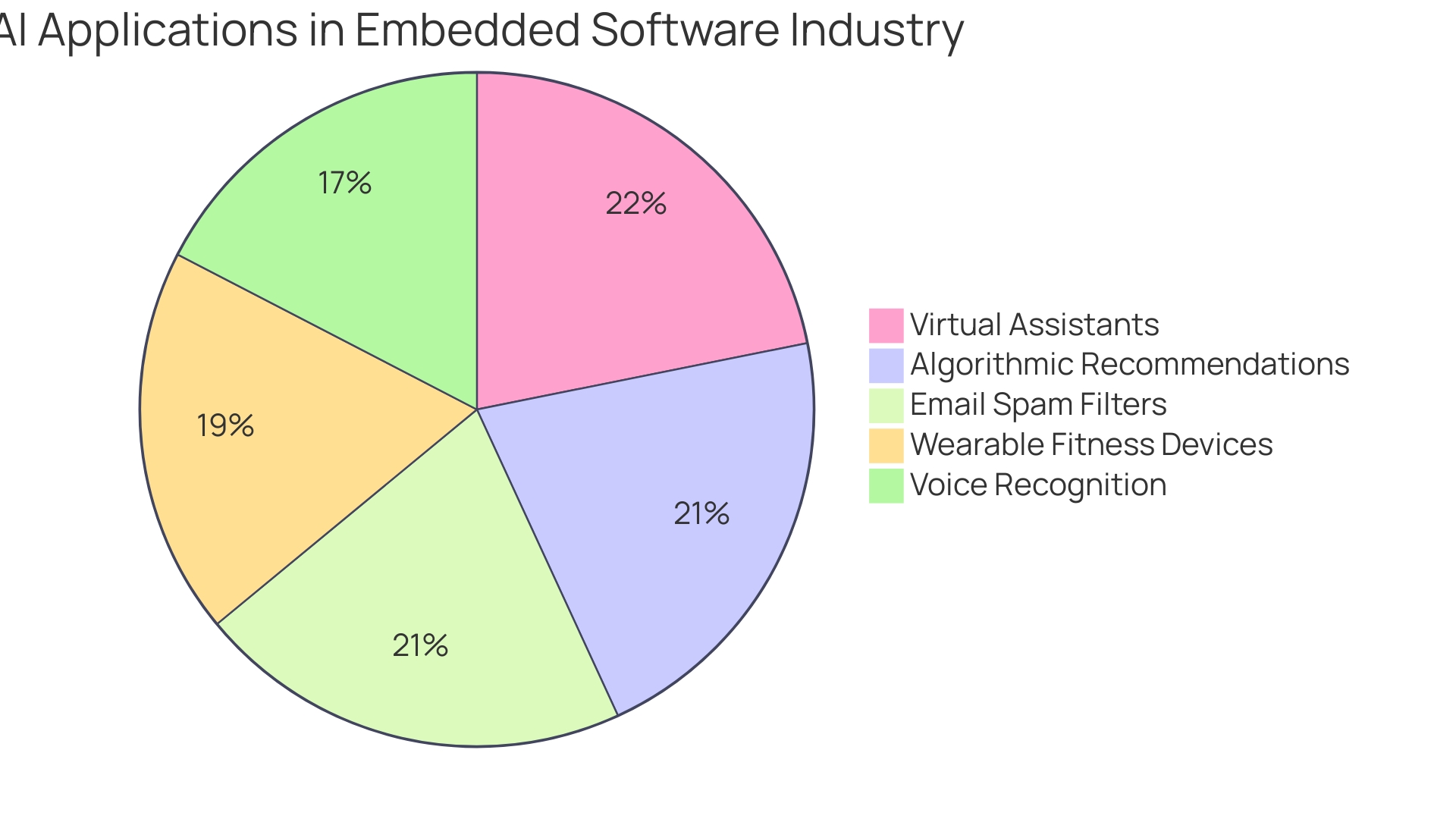Introduction
The Importance of Post-Deployment Data in Software Development
Embedded software companies are constantly striving to improve their products and deliver the best possible user experience. One key strategy they employ is harnessing post-deployment data.
By extracting and analyzing data from real-world operation, these companies gain valuable insights that enable them to enhance their systems. In this article, we will explore the significance of post-deployment data and how it can contribute to the continuous improvement of software products.
The Importance of Post-Deployment Data in Software Development
Embedded software companies are at the forefront of marrying hardware with advanced software solutions, and the key to their success lies not just in deployment, but in the continuous improvement of their products. One pivotal strategy involves harnessing post-deployment data, which offers an invaluable window into the real-world operation of their systems. Through meticulous data orchestration, these companies can extract and transform data from diverse sources, creating a cohesive and actionable dataset.
Take, for example, the creation of an Analytics Data Platform for a Solid Oxide Fuel Cell (SOFC) product. The challenge was to manage the product's evolving nature and its market environment. By selecting key use cases and focusing on automation and scalability, the company was able to adapt to changes swiftly, showcasing the importance of flexible and resilient data platforms in the ever-changing landscape.
The benefits of such data-driven approaches are clear. Companies can significantly reduce the time to deliver updates, enhance product quality through consistent testing, and ensure a robust continuous delivery pipeline. As the case of the VanMoof e-bike demonstrates, the lack of foresight in post-deployment can lead to significant consumer dissatisfaction when connected devices become inoperable due to company insolvency.
Therefore, embedded software companies must not only focus on the initial product design but also on the ongoing costs and infrastructure required to support their devices post-deployment. By employing continuous delivery practices, embedded software companies can ensure that software updates are more than just routine maintenance; they are opportunities to enhance and refine the user experience. The result is a product that remains functional, secure, and relevant, long after it has left the drawing board.
Case Study Examples of Innovative Solutions in Embedded Software
Embedded software companies are at the forefront of technological innovation, often grappling with complex challenges to deliver cutting-edge solutions. For instance, Lindy's ambitious project to integrate a wide array of apps and services for their AI assistants required a strategic approach. Rather than building from the ground up, which could have delayed their market entry by a year, they opted for n8n's integration services, demonstrating the importance of leveraging existing technologies to expedite development.
In the quest for sustainability and efficiency, Rivian, the trailblazing electric vehicle manufacturer, faces the task of streamlining processes while maintaining its environmental commitment. With operations spanning several states and a goal of net-zero emissions by 2040, Rivian's challenges are multifaceted, including the need for collaboration across dispersed teams and the pursuit of sustainable materials and practices. Similarly, Elixir's role in Veeps' technical transformation underscores the necessity of scalable solutions in the embedded software industry.
The platform's capability to handle hundreds of thousands of simultaneous users during live music events speaks to the robustness required in today's digital landscape. These examples shed light on the diverse hurdles and strategic decisions that define success in this dynamic sector. The embedded software industry is not without its risks, as highlighted by recent safety incidents involving Cruise's autonomous vehicles.
These events underscore the critical nature of thorough testing and regulatory compliance in software development. Meanwhile, the global push toward semiconductor sovereignty, exemplified by India's $10 billion incentive for ecosystem development, signals the strategic importance of embedded software in national and economic security. As companies navigate these challenges, they must balance innovation with practicality.
Kelsey Hightower's advice to 'stick to boring architecture' emphasizes the value of proven technologies over untested novelties. This pragmatic approach is echoed by industry veterans who recognize the difficulty in staying current with rapid advancements in AI and other technologies. Ultimately, the embedded software industry's path forward is marked by a blend of creativity, sustainability, and steadfast reliability.
The Role of AI in Enhancing Customer Experience in Embedded Software
Artificial Intelligence (AI) is dramatically transforming the embedded software industry, enabling companies to offer personalized experiences that cater to individual user needs. For instance, Walles.Ai's integration into embedded software platforms has allowed real-time analysis of user behavior, preferences, and purchase history, leading to highly targeted product recommendations.
This strategic application of AI not only resulted in a substantial increase in sales but also significantly elevated customer satisfaction levels. In the financial sector, AI's impact is evident in fraud detection.
Walles.AI's sophisticated algorithms have been pivotal in identifying suspicious transactions and anomalous behavior, thereby safeguarding assets and bolstering customer trust. This has been crucial in an era where financial security is paramount.
Similarly, the manufacturing industry has seen AI-driven enhancements, with smart manufacturing solutions from Walles.AI optimizing production processes and boosting employee productivity. These advancements are a testament to Ai's capability to refine operations and improve profitability.
As AI continues to evolve, it's becoming increasingly efficient, enabling faster responses to changes, reducing costs, and predicting downtimes in critical environments. This aligns with the insights from Forbes, which reports that 64% of businesses anticipate a productivity spike due to AI. Moreover, Ai's precision in decision-making is becoming indispensable, with poor decision-making previously costing companies an average of 3% of profits, as noted by Harvard Business Review. These developments are part of a broader trend, as evidenced by the recent Embedded World event, where attendance surged by 19%, signaling the industry's recovery to pre-pandemic engagement levels and underscoring the significance of embedded systems and AI. Such trends are reshaping the industry, paving the way for further innovation and intuitive customer experiences.

Benefits of Embedded Payments for Software Companies
Embedded payments are revolutionizing the software industry, offering a frictionless transactional experience within applications. Bain & Co. reports that in the United States, financial services within e-commerce and other platforms represented 5% of financial transactions in 2021, a figure projected to double by 2026.
This surge highlights the immense potential of embedded finance, which could encompass $7 trillion in the US alone. With industry leaders like Oracle leveraging their cloud hosting platforms, the trend of embedded payments is gaining global momentum, evidenced by companies like Square and Toast pioneering the integration of payment solutions into their software offerings.
The complexity of integrating these payment systems into existing software products cannot be underestimated. It requires a multi-disciplinary approach involving product managers, developers, and quality assurance analysts, contrasting with the past when a single developer could handle multiple roles.
The shift towards cloud-based, subscription-oriented platforms necessitates a collaborative effort to ensure a seamless customer experience. The payments landscape is poised for further evolution, with Visa identifying key trends such as AI and global SMB expansion. Open, modular payments infrastructure is expected to become the norm, empowering businesses to tailor solutions to their needs. As the industry enters a 'decoupling' era, electronic transactions have grown threefold compared to overall payments revenue. These developments offer a robust outlook for the embeddification of payments, with strategic opportunities for those who navigate this transformation effectively.
Business Intelligence Examples for Embedded Software Companies
Embedded software companies are increasingly turning to business intelligence (BI) tools to consolidate and leverage data for strategic advantage. By harnessing BI, these companies can unearth critical insights from their operations, customer behaviors, and overarching market dynamics. For instance, SaaSWorks revolutionized the way CFOs approach data by providing clean, AI-ready datasets, allowing them to break free from the restrictive cycles of monthly and quarterly reporting.
This transformation is driven by the ability to extract data from disparate systems, apply business logic, and orchestrate data continuously, which is crucial for companies handling complex revenue models with diverse revenue streams and business units. Sisense, a cutting-edge BI software, exemplifies how embedded analytics can streamline the entire data workflow. By offering a unified platform, Sisense enables non-technical users to perform intricate data analysis, thereby democratizing data and fostering a culture where every team member can contribute to informed decision-making.
This single-stack architecture contrasts with traditional BI tools, which often require multiple disjointed tools for various analytics stages. Adoption of such software can be championed by demonstrating its value through pilot programs, sharing success stories, and providing communication templates to articulate the benefits. One IoT software vendor in the Philippines attributed their commercialization success to addressing customer familiarity concerns, highlighting the importance of easing transitions to new software models.
In the realm of software, Marc Andreessen's prophetic statement that 'software is eating the world' rings truer than ever. Today, software is an intrinsic part of our lives, embedded in everything from our cars to our appliances, and every company is, in effect, a software company. This digital ubiquity underscores the vital role of embedded software companies and the BI tools that empower them to navigate an ever-digitized landscape.

Implementing Modularity in Software Development: A Case Study
Modularity in software development is not just a trend; it's a strategic approach that can determine the success or failure of a system. Embedded software companies, in particular, can reap immense benefits from a modular approach.
Take the case of a certain company that embraced modularity through Packwerk, a library designed to enforce boundaries and maintain high cohesion within Rails applications. By creating at least three packages, with one being dependent on another, they were able to experiment with and realize the advantages of modularization.
The transition from a Transaction Script pattern, which often leads to a monolithic and rigid system, to a more modular architecture is a leap towards sustainable and adaptable software development. As the industry moves away from tightly coupled systems that are difficult to manage, the focus has shifted to creating software that is easy to implement, modify, and extend.
This shift is supported by the fact that 71% of companies use agile methodologies in their development lifecycle, with smaller companies reporting higher satisfaction rates. The benefits of modularization are clear: it simplifies the process of identifying and addressing bottlenecks, reduces costs, and lowers the barrier to entry for team members. It's a proactive measure against the accumulation of technical debt, which can make development tasks increasingly difficult and time-consuming. By focusing on modifiability and designing a system that can easily accommodate drastic design changes, companies can maintain a competitive edge. Statistics show that companies with mature product and operating models enjoy 60% greater total returns to shareholders, highlighting the tangible benefits of a well-structured development process.
Conclusion
In conclusion, post-deployment data is invaluable for embedded software companies, providing insights that drive continuous improvement. Leveraging AI enhances customer experiences and optimizes operations.
Embedded payments revolutionize the industry by offering frictionless transactions. Business intelligence tools empower companies to make informed decisions based on data analysis.
Embracing modularity ensures flexibility and competitiveness in software development. By harnessing post-deployment data, companies gain valuable insights to enhance their systems.
AI integration personalizes experiences and improves operations. Embedded payments offer seamless transactions within applications.
Business intelligence tools provide critical insights for strategic decision-making. Modularity enables adaptability and competitive advantage. To succeed in the dynamic embedded software industry, companies must embrace these strategies. They can continuously improve products and deliver exceptional user experiences by leveraging post-deployment data, integrating AI capabilities, implementing embedded payments, utilizing business intelligence tools, and embracing modularity. In conclusion, the importance of post-deployment data cannot be overstated in driving continuous improvement for embedded software companies. By adopting these strategies, companies can stay ahead of the curve and thrive in this ever-evolving industry.





